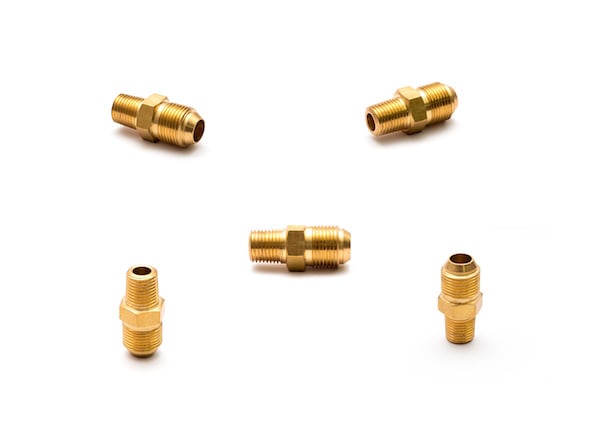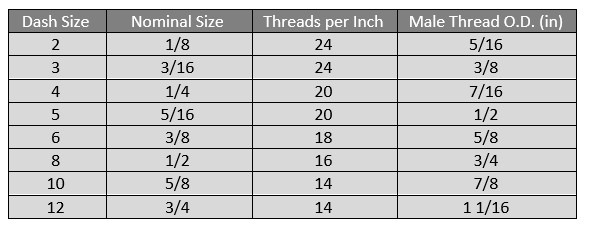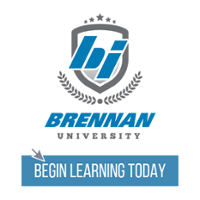Deficient water systems expose hundreds of millions of people to dangerously contaminated or chemically polluted drinking water. In fact, it’s estimated that nearly 830,000 people die each year as a result of unsafe water conditions.
However, in most of Canada and other industrialized countries, sophisticated water treatment plants and transmission lines provide safe drinking water- something we often take for granted.
A relatively simple, yet effective component to water transmission is copper pipes. Although in more recent years PVC has also become popular for water lines, the fact remains both materials are vulnerable to chemical leaching. However, copper withstands leaching better than PVC and decreases the potential for bacteria growth, which contaminates drinking water.
Water lines are not the only application for copper tube and pipe- or the brass fittings that connect them. 
Connections for Copper and Soft Steel Tube and Pipe
SAE 45° Brass Flare Fittings are an extremely reliable and cost-effective fitting used in many applications including:
- HVAC
- Refrigeration
- LP and natural gas
- Instrumentation
- Flammable liquids
- Water lines
- Automotive power steering
- Hydraulic and pneumatics
As one of the most common flare fitting standards and meeting SAE J512 and SAE J513 requirements, SAE 45° brass flare fittings are also UL listed and highly vibration resistant. These compression style fittings connect ductile copper or soft steel tubing using a flaring process that is usually a type of cold working forge technique. The cold working assembly process involves using a die to grip the tube and a mandrel that is pushed into the tube, forming the flare which seats onto the fitting. 
High pressure flare joints are possible by increasing the tube wall when doubling the material over itself before the flare is formed. The end of the tube is compressed axially before flaring, which makes the tube wall yield outward in a radial form, resulting in a bubble. As with a single flare, the bubble is forced along the end axis of the tube by using a conical tool, forming the double thickness flare.
Flared connections provide long service life and are often used in locations with minimal accessibility. A leak-tight, pressure-resistant seal is created when the flare nut is secured to the tapered flared tubing and connects to a tapered fitting. Their metal-to-metal connection is designed for high pressure applications and provides excellent strain relief which can withstand most mechanical pullout.
Flared fittings are the applicable choice when high heat or open flames are present as an alternative to solder joints.
Brass SAE 45° Flare Fittings Thread Specifications

Gas Applications for 45° Flare Fittings and Conveyance Standards
45° flare fittings are typically the optimal choice for copper tube used for liquid propane, propane gas, and natural gas transfer in accordance with NFPA 54/ANSI, Z223.1 National Fuel Gas Code.
For gas conveyance, the Canadian Standards Association (CSA) publishes model codes to address gas systems (along with electrical and elevator). Additionally, the National Research Council (NRC) Codes Canada and Canadian Commission on Building and Fire Codes (CCBFC) sets forth national model codes for their scope and objectives regarding minimum requirements. Other documents that are often used in relation to water and gas conveyance requirements may be classified under:
- National Building Code (NBC)
- National Energy Code for Buildings (NECB)
- National Fire Code (NFC)
- National Plumbing Code (NPC)
Water Applications for 45° Flare Fittings & Conveyance Standards
Flare to iron pipe connections are common for copper tubes used in water service applications when connecting the water service to the meter or main. Most city, town and water company plumbing codes require type L copper tubing or HDPE (High Density Polyethylene) pipe for providing residential and commercial water service.
In recent years, the National Standard of Canada (NSC) has incorporated NSF/ANSI 61 (American National Standard for drinking water system components) to encompass updates in the Canadian market. When the NSC incorporated this change, the standard was retitled NSF/ANSI/CAN 61: Drinking Water System Components–Health Effects. Eleven of the thirteen provinces/territories require compliance to NSF/ANSI 61 for potable (drinking) water system components used in municipal systems and well extraction.
SAE 45° Brass Flare Fittings:
- Are UL listed
- Are used with brass, copper and aluminum tubing, along with welded steel hydraulic
- Endure vibration when using a long style nut
- Operate under working pressures of 550 psi for 19 mm (3/4") to 2800 psi for 3.18 mm (1/8")
- Meet SAE J512 and SAE J513 requirements
- Withstand temperatures ranging from -54°C (-65°F) to 121°C (250°F)
45° brass fittings are used with brass, copper, steel or aluminum tubing and are in gas, refrigeration, automotive, air conditioning and plumbing applications, as well as other fuel equipment and vacuum lines. They are also used in the beverage industry, such as breweries. and a primary advantage of flare fittings is their ease of frequent disassembly and reassembly while maintaining a leak tight seal.
Sources include:

